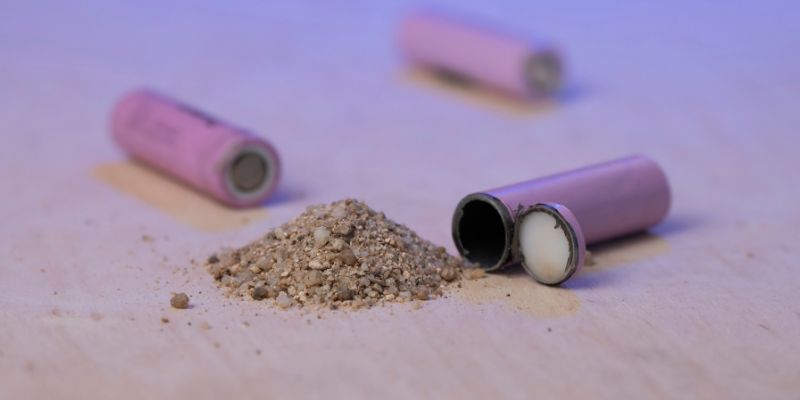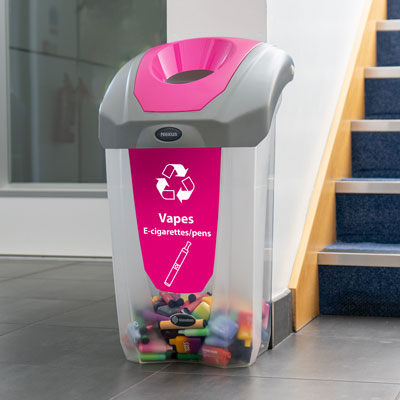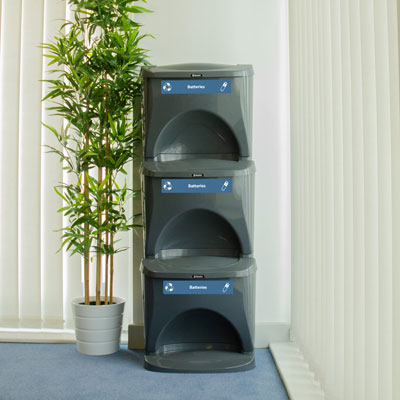"It is clear from the damage cases collected in this report that LIB-caused fires throughout the waste management process are already risking the safety of workers, bystanders, and emergency responders and costing the industry money. This problem is only going to get worse in future years." - EPA, United States.*

Lithium batteries power our modern world, from smartphones to electric vehicles, but their environmental impact is a growing concern. Their high energy density and long life cycles make them a popular choice and a great alternative to fossil fuel, however, as more conversations come up about its impact on the environment, it begs the question - Are lithium batteries truly eco-friendly?
The Threat of Lithium Batteries to Environmental Safety
While lithium-battery cars can reduce consumer reliance on fossil fuels, they don’t take away the potential risks and costs they have on the environment.
Much research associates the extraction of lithium, which involves extensive mining, with significant environmental damage, including habitat destruction and water pollution. However, there are other negative effects of post-extraction we still tackle today.
Do Lithium Batteries Cause Fires?
There have been numerous reports nationwide about fires breaking out at recycling facilities due to the combustion of lithium-ion batteries thus increasing the cost of collecting such waste.
After the fire outbreak on May 31, 2023, at the City of Milwaukee and Waukesha County's jointly-owned MRF in the Menomonee Valley, batteries and electronics became prohibited from Milwaukee's curbside recycling bins.
Furthermore, in a press release, NWRA Interim President and CEO Jim Riley, stated:
“Besides recycling facilities, these batteries are a threat to the entire solid waste and recycling system, from collection to disposal, and impact our members every day. Given the risk they pose, it is important consumers understand that lithium-ion batteries should not be placed in their waste or recycling bins and should be disposed of properly through the right channels.”
The report goes on to explain that the increased risk of MRF fires has driven up the cost to insure these facilities from less than 20 cents per $100 insured property value to as much as $10 per $100 insured.
How to Dispose of Lithium Batteries
Proper disposal of lithium batteries is crucial to mitigate their environmental impact and reduce fire hazards. Before recycling, it is essential to take certain precautions:
Tape off ends:
Use non-conductive tape to cover the battery terminals. This prevents the terminals from coming into contact with other metals, which can cause short circuits and potentially ignite fires.
Store in a cool, dry place:
Until you can dispose of them properly, store batteries in a non-metallic container in a cool, dry location to prevent overheating.
Community Awareness:
Placing clear containers with decals in public spaces, workplaces, and community centers can raise awareness about battery recycling. When people can see where to dispose of lithium batteries clearly, they are more likely to follow through with recycling.
Where to Dispose of Lithium Batteries
Finding the right place to dispose of lithium batteries is crucial for environmental protection. Here are some options:
Drop-Off Points:
Many municipalities like retail stores, electronic repair shops, and community recycling centers accept used lithium batteries for recycling. Check local directories to find the nearest drop-off point.
Mail-In Programs:
Some battery manufacturers and electronic companies offer take-back programs to recycle used batteries. Additionally, certain facilities specialize in handling electronic waste, including lithium batteries. These centers ensure that batteries are recycled in compliance with environmental regulations.
Glasdon Recycling Bins: A Sustainable Solution to E-Waste Recycling
Glasdon Recycling Bins enhances visibility and convenience for battery recycling efforts with clear designs that help users easily identify where to deposit e-waste, promoting responsible disposal habits.

C-Thru™ 5Q, 10Q, 15Q Collection Tubes
Designed with functionality and aesthetics in mind, the C-Thru 5Q, 10Q, and 15Q recycling containers are ideal for retail environments and public spaces.
Their transparent polycarbonate body minimizes the risk of cross-contamination and allows operators to easily monitor the fill – ensuring efficient recycling and visibility for users.
Available via Express Dispatch to be shipped within 48 hours
The C-Thru Nexus® 8 Gallon Recycle Bin
Glasdon offers a slim and transparent pleasing design with features like full-level indicators and recycling decals, a choice of aperture colors, and support for efficient waste segregation and recycling. Aside from its unique features, this bin is also suitable for high-security areas.
This makes the C-Thru Nexus bins not only functional but also effective in promoting sustainable e-waste recycling practices in high-visibility areas.
Available via Express Dispatch to be shipped within 48 hours


Nexus® Stackable Recycling Bins
Made from environmentally friendly Duratec™ material containing 40% recycled content, the Nexus Stack not only aids in recycling but is also recyclable at the end of its service life.
Each removable tilt bin, equipped with a built-in liner, ensures no leaks and easy emptying without dismantling the units. Its compact, lightweight design allows for easy placement and storage, whether freestanding or wall-mounted.
Available via Express Dispatch to be shipped within 48 hours
Our e-waste bins can be customized to suit your aesthetic. Speak to one of our experts and we'll help you create a sustainable e-waste station.
References
*https://www.epa.gov/system/files/documents/2021-08/lithium-ion-battery-report-update-7.01_508.pdf
*https://www.epa.gov/recycle/used-lithium-ion-batteries
*https://eu.petoskeynews.com/story/news/environment/2022/05/24/battery-fires-increasing-recycling-center-risk-damage-and-injury/9890385002/




